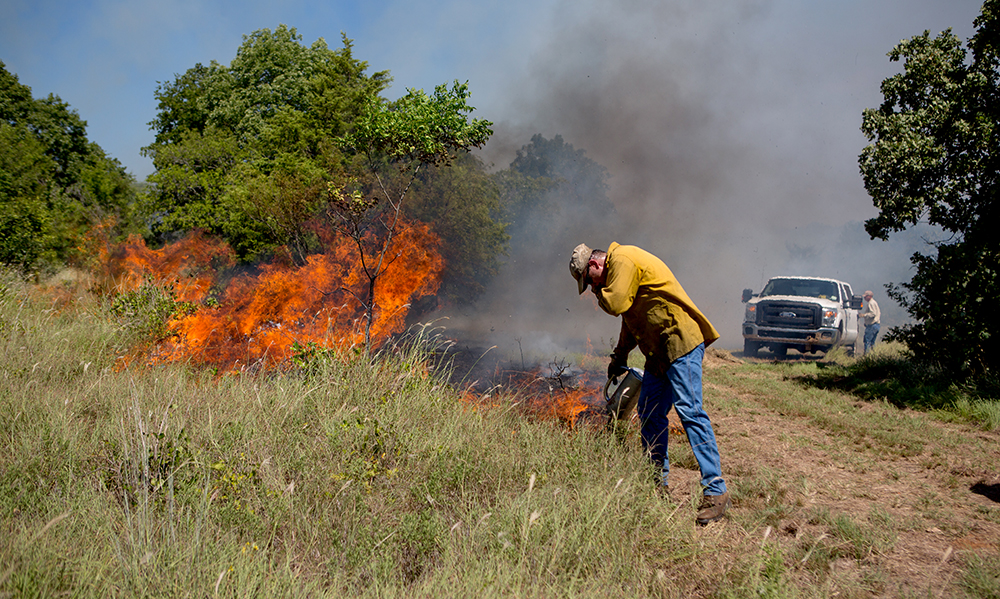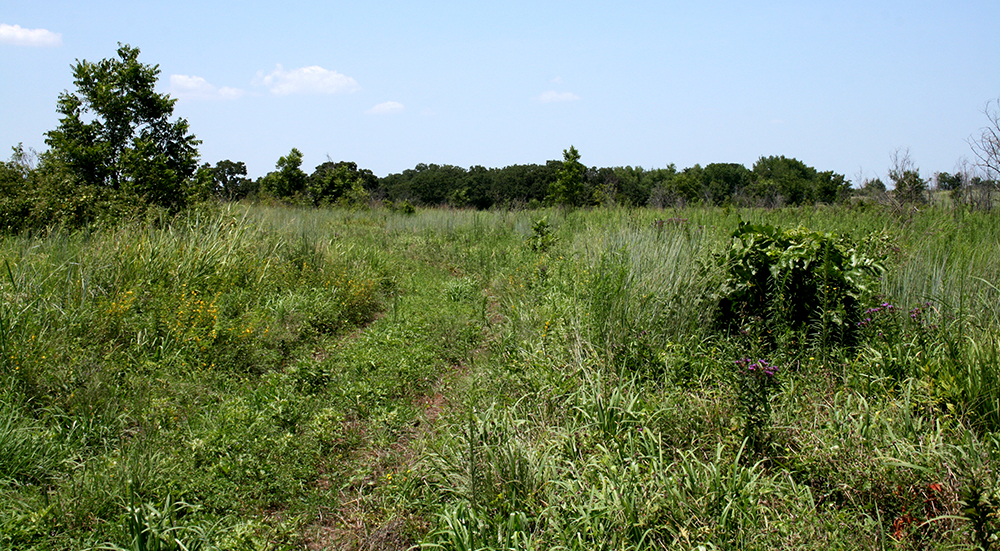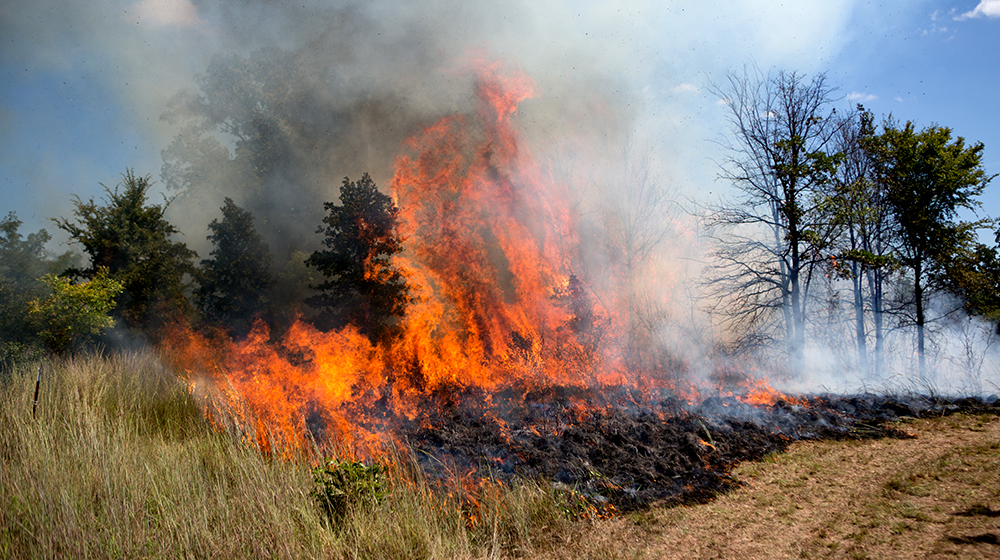For most prescribed fire practitioners in the Southern Great Plains, burns are conducted during winter and early spring (December to March). This burning season has become commonplace because most of the fuels (grasses and leaf litter) are dead and burn easily, and a large portion of prescribed burns are conducted close to spring green-up to improve forage quality.
However, historically, the land was burned during all seasons of the year. A short burn season can make it difficult to successfully accomplish land management goals. We should consider burning during the entire year to create more opportunities for land managers to conduct prescribed burns.
DOWNSIDES OF POSTPONING BURNS
It is common for burns to be postponed to another year because a short burn season and weather limitations make it difficult to conduct burns in a timely manner. Postponement allows more brush encroachment on rangelands that could negatively impact wildlife habitat and grazing quantity. The seasonality of a prescribed burn depends on fuel type and the goals for the land. As for any prescribed burn, extending the burn season requires planning.

TOOLS YOU NEED FOR A SUCCESSFUL BURN
As part of the prescribed burn planning process, managers should secure the appropriate equipment.
Following are some basic tools and equipment for conducting a prescribed burn. For more
information about prescribed fire and other essential tools needed for a successful burn, please visit noble.org/fire.
POWER EQUIPMENT
All power equipment should be checked and serviced prior to a burn. Remember to have extra fuel and oil.
- Sprayers
- Water pump
- Chainsaw
- Blower
HAND EQUIPMENT
- Drip torch
- Drip torch fuel
- Ax
- Fire rake
- Fire swatter
- Shovel
- Wire-cutting pliers
GROWING-SEASON BURNS HELP WITH BRUSH CONTROL
For burns conducted during summer and fall, grasslands and mixed shrublands burn better than woodlands. To carry a fire during the growing season, the previous year’s grass and forb growth is needed. This requires planning to ensure grazing does not remove too much plant material so burns can be conducted and are effective. Wooded areas are usually best burned during winter because wooded areas need leaves to carry fire; the longer leaves are on the ground after leaf-drop, the more difficult they are to burn. It is harder to carry a fire through wooded areas during the growing season than in December or January.
Burns conducted during summer and fall have different impacts on the plant community than burns conducted during winter and spring. Burns during the growing season typically have a bigger impact on brush species. If brush control is a land management objective, consider burning during the growing season.

DIVERSITY IN BURN TIMING PROMOTES PLANT DIVERSITY
It also is beneficial to wildlife to have burned areas at different times of the year to increase plant diversity, which is imperative for good wildlife habitat. Diversity is one of the 6 soil health principles for regenerative ranching. Burning multiple times of the year creates a mosaic of various plant communities in different plant successional stages to benefit many wildlife species. Diversity in burn season also improves community dynamics, one of the ecosystem processes that is important for ecological health and resilience.

FEWER ESCAPES WHEN VEGETATION IS GREEN
Typically, weather conditions are most volatile during winter and early spring in the Southern Great Plains. Days with low humidity and high winds are not uncommon. In summer and fall, weather conditions tend to be more stable with lower wind speeds and higher humidity. Due to more consistent and safer weather conditions during summer and fall, some people prefer to burn outside the typical burn season. Burns during the growing season also tend to have fewer escapes than burns in the dormant season because green vegetation mixed with dead fuel slows down the fire.
Prescribed fire is an important ecological process for the Southern Great Plains. Our plants are adapted to and require fire, regardless of the burn season. We should consider using fire at all times of the year to accomplish our land management goals. We shouldn’t limit ourselves to just a few months out of the year to burn.
Story credit: Will Moseley, Noble Research Institute.

















